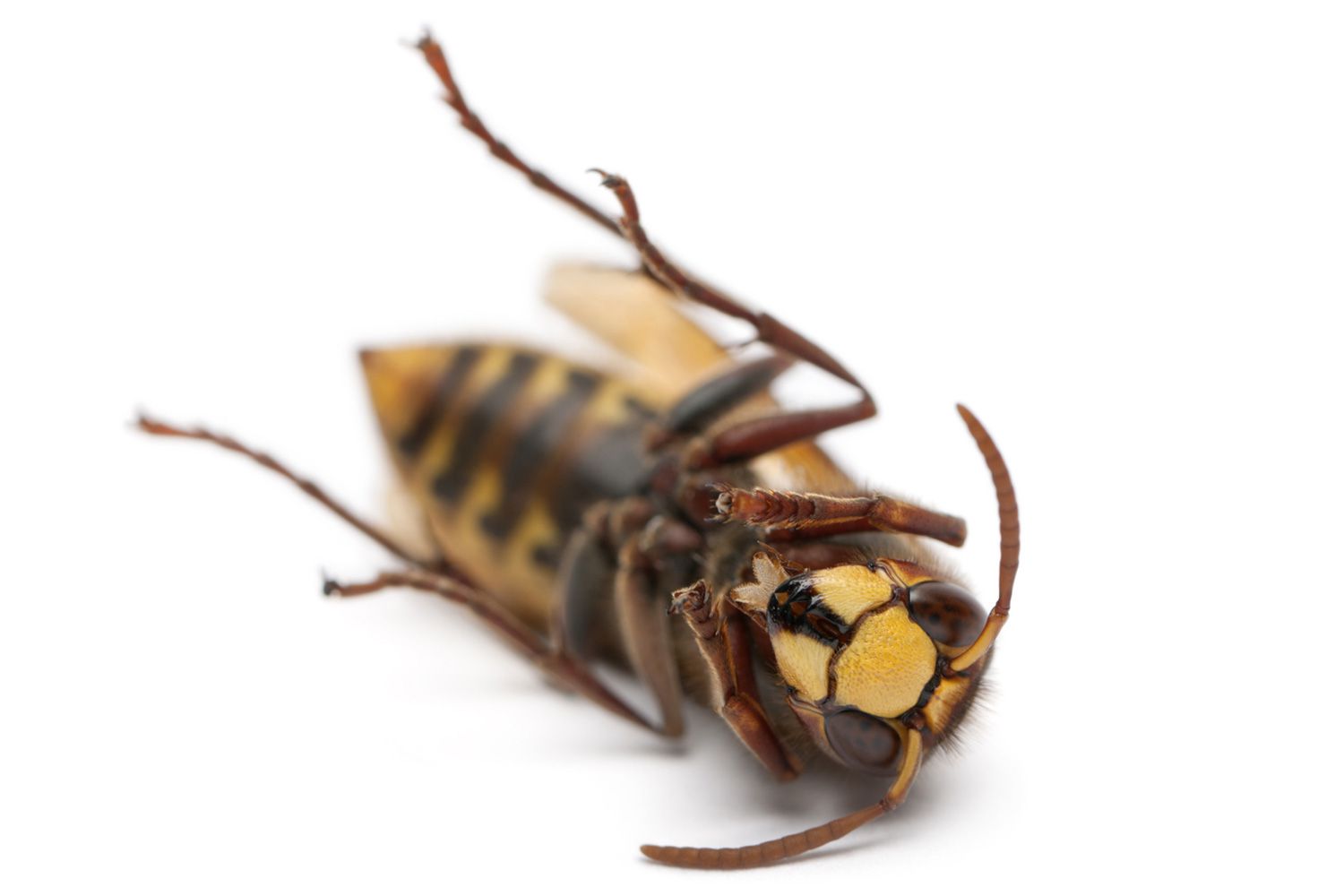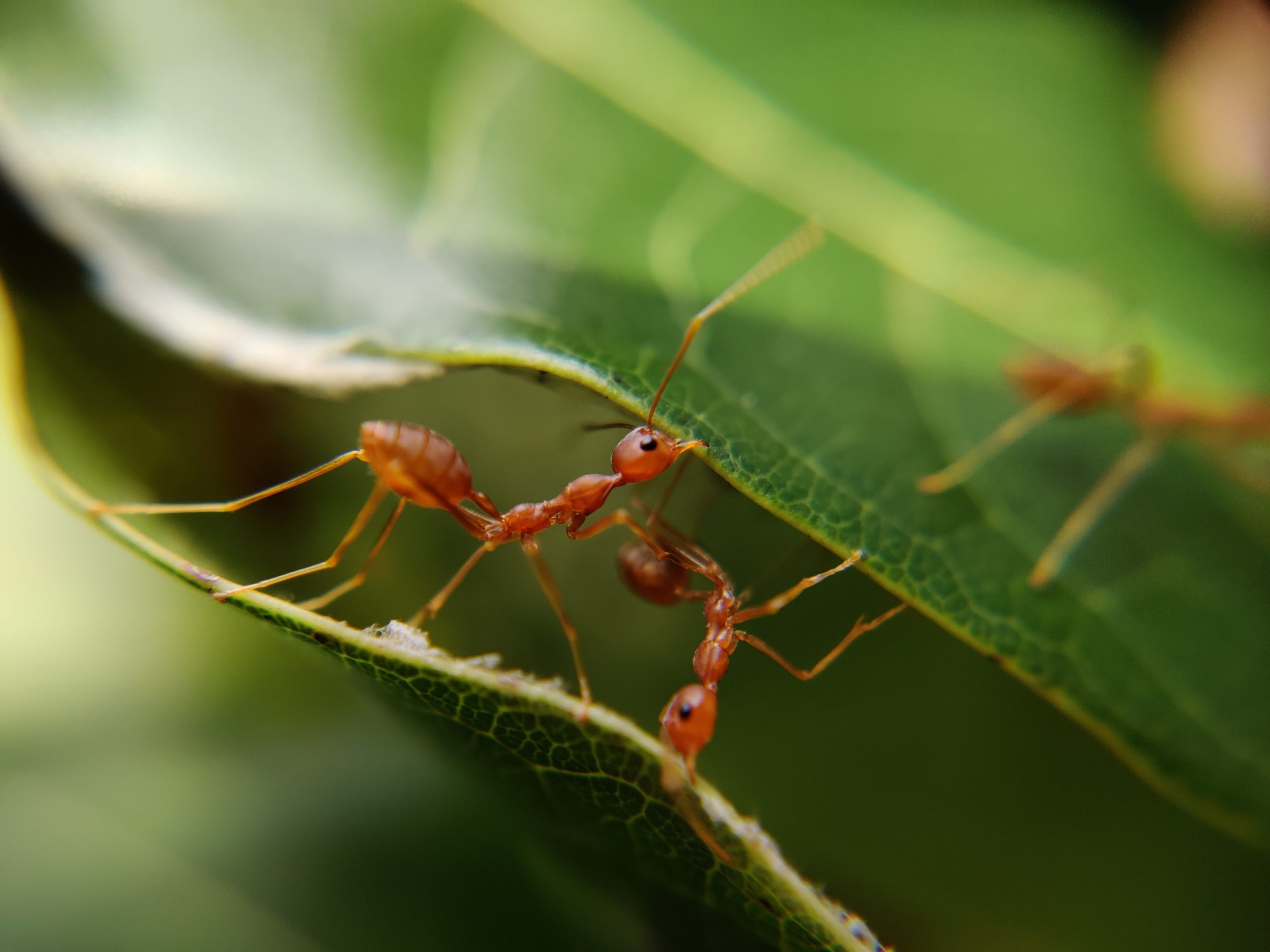Home>Gardening News and Trends>Latest News>Do Insects Feel Pain When They Fall


Latest News
Do Insects Feel Pain When They Fall
Published: November 29, 2023
Discover the Latest News on Whether Insects Feel Pain When They Fall. Learn about the fascinating research and insights into the sensory experiences of insects in this thought-provoking article.
(Many of the links in this article redirect to a specific reviewed product. Your purchase of these products through affiliate links helps to generate commission for Chicagolandgardening.com, at no extra cost. Learn more)
Table of Contents
Introduction
Insects are among the most diverse and abundant creatures on Earth, with an estimated 10 quintillion individuals inhabiting our planet. As highly adaptable organisms, insects have developed an array of fascinating behaviors and adaptations to navigate their environment. However, the question of whether insects feel pain, particularly when they fall, remains a subject of much scientific inquiry and philosophical debate.
The quest to understand pain perception in insects is rooted in our desire to empathize with the creatures that share our world. While we may instinctively assume that insects experience pain, the reality is far more complex. Unlike vertebrates, insects possess a decentralized nervous system consisting of a collection of ganglia throughout their body, rather than a centralized brain and spinal cord.
This unique nervous system structure, combined with fundamental differences in anatomy and physiology, has led scientists to question whether insects possess the necessary components to perceive pain as we do. In order to explore this topic further, it is crucial to examine the mechanisms of pain perception in insects, as well as the controversial findings that have contributed to the ongoing debate.
The Nervous System of Insects
The nervous system of insects is fundamentally different from that of vertebrates, and understanding this distinction is crucial when considering their potential for pain perception. Unlike mammals, insects lack a centralized brain and spinal cord. Instead, their nervous system is composed of a series of ganglia located throughout their body, with each ganglion responsible for specific functions.
At the core of an insect’s nervous system is the brain, which is connected to the ventral nerve cord running along the insect’s underside. This nerve cord is comprised of a chain of ganglia interconnected by nerves, allowing for communication and coordination within the insect’s body.
While the insect brain is not as complex as that of mammals, it still plays a vital role in processing sensory information and coordinating motor responses. Each ganglion in the ventral nerve cord is connected to specific parts of the insect’s body, allowing for rapid communication and reflexive actions.
Additionally, insects possess specialized sensory receptors located in various parts of their bodies. These receptors allow them to perceive and respond to different stimuli, such as light, heat, chemical cues, and touch. The sensory information collected by these receptors is transmitted to the central nervous system, where it is processed and integrated.
Given the decentralized nature of their nervous system, it raises questions about whether insects have the capacity to experience pain in the same way that humans and other vertebrates do. While insects can exhibit complex behaviors and responses to various stimuli, the debate lies in whether these responses stem from conscious experience or simply instinctual reactions.
With an understanding of the unique nervous system of insects, we can delve deeper into the mechanisms of pain perception in these remarkable creatures.
Mechanisms of Pain Perception in Insects
The exploration of pain perception in insects requires an understanding of the mechanisms by which they process and interpret potentially harmful stimuli. While insects lack the centralized nervous system of mammals, they possess sensory receptors that enable them to detect and respond to potential threats.
One important aspect of pain perception is the presence of nociceptors, specialized sensory receptors that respond to noxious stimuli. Insects have been found to have nociceptor-like cells, which can detect and transmit signals related to potentially harmful stimuli. These cells are often located near the sensitive areas of an insect’s body, such as the extremities or areas exposed to potential danger, like the legs or antennae.
When a potential threat is detected, such as a predator’s attack or an injury, nociceptor-like cells in insects can generate electrical signals that are transmitted to the central nervous system, triggering a response. This response can range from reflexive actions, such as rapid withdrawal or defensive behaviors, to more complex avoidance or escape behaviors.
Furthermore, studies have shown that insects possess neurotransmitters and neuromodulators associated with pain perception in mammals. For example, the presence of substance P, a neurotransmitter involved in pain signaling, has been observed in certain insects. This suggests that insects may have similar biochemical pathways involved in pain perception and response.
It is important to note that pain perception in insects may differ significantly from the human experience. Insects lack the cognitive abilities and emotional consciousness that humans possess, so their perception of pain may be devoid of the emotional and subjective experience associated with human pain.
As research continues, scientists aim to unravel the intricacies of pain perception in insects and shed light on the specific mechanisms involved. By studying these mechanisms, we can gain a deeper understanding of how insects interpret and respond to potentially harmful stimuli.
Debate Surrounding Insect Pain Perception
The topic of insect pain perception has sparked intense debate among scientists, philosophers, and animal rights advocates. The central question revolves around whether insects have the capacity to experience pain in a manner similar to humans and other vertebrates.
One school of thought argues that insects, with their decentralized nervous system and lack of cognitive abilities, do not possess the necessary neural and cognitive complexity to experience pain. They argue that the responses exhibited by insects in potentially harmful situations are solely instinctual and do not involve conscious awareness or subjective experience.
Supporters of this perspective propose that insects, driven by their evolutionary adaptations, exhibit reflexive and automatic responses to avoid potential harm. These responses, they argue, have functional benefits for survival and reproductive success but do not necessarily indicate the presence of pain perception as humans understand it.
On the other hand, proponents of the opposing view argue that the similarities between the nervous systems and behavioral responses of insects and more complex animals suggest the possibility of pain perception. They contend that nociceptor-like cells, the presence of neurotransmitters associated with pain, and the intricate behaviors exhibited by insects in response to harmful stimuli indicate a potential capacity for pain experience.
These proponents argue that pain perception in insects may differ in intensity, quality, or subjective experience compared to humans, but it is still a form of conscious and aversive experience. They emphasize that pain is a valuable evolutionary adaptation that helps animals avoid or minimize potential harm, and it should be recognized and respected in all organisms capable of experiencing it, regardless of their cognitive abilities.
As the debate continues, ongoing research seeks to uncover definitive evidence regarding insect pain perception. By conducting experiments that explore the neural activity associated with noxious stimuli and observing behavioral responses, scientists aim to gain a clearer understanding of the subjective experiences, if any, that insects may have.
The understanding of insect pain perception has broader implications for our ethical considerations and treatment of these fascinating creatures. It raises questions about our responsibility to minimize harm and promote the well-being of insects as sentient beings, prompting further discussions on animal welfare and our moral obligations towards all living organisms, regardless of their cognitive complexity.
The Impact of Falling on Insects
Falling is a common occurrence for insects, especially those that spend a significant portion of their lives in trees, vegetation, or flying in the air. The impact of a fall can vary depending on the height, surface, and other factors. Yet, little is known about how insects experience and respond to the physical forces they encounter when falling.
When an insect falls, it experiences a sudden change in gravitational forces, which can subject its body to significant stress. The effect of the fall largely depends on various factors, including the mass and size of the insect, the height from which it falls, and the surface it lands on.
For small and light insects, such as flies or mosquitoes, falling from great heights may not cause significant harm. Their light exoskeleton and small size help them withstand the impact forces, allowing them to recover quickly and resume their activities. However, for larger insects or those with fragile structures, a fall from a considerable height can result in severe injuries or even death.
The impact of a fall can lead to various types of injuries in insects. For instance, a fall can cause damage to the insect’s exoskeleton, leading to fractures, dislocations, or even loss of limbs. Internal organs may also be affected, resulting in internal bleeding or damage to vital systems.
Additionally, the environment where an insect falls can also play a role in the impact. A fall onto a hard surface, such as concrete or rocks, can result in more severe injuries compared to a fall onto a soft, cushioned surface, like soil or leaf litter. The presence of obstacles or sharp objects in the landing area can further increase the risk of injury.
Not all insects respond to falling in the same way. Some species have evolved unique adaptations to survive falls, such as specialized flight structures that enable them to regain control and glide to safety. Others may exhibit instinctive behaviors, like rolling into a protective ball or using their wings to slow down the descent.
It is important to note that while insects may experience physical stress and potential harm from falling, it is still unclear whether they interpret this as pain. The absence of a centralized nervous system and the limited understanding of insect sensory perception make it challenging to determine the exact nature of their experience during a fall.
Understanding the impact of falling on insects is not only essential for studying their physiology and physical adaptations but also for the development of effective conservation and management strategies. Exploring how insects respond to falls can provide valuable insights into their vulnerability and potential risks they face in their natural environment.
Examining Potential Pain Responses in Falling Insects
When considering the potential pain responses in falling insects, it is crucial to investigate their behavioral and physiological reactions to determine if they exhibit signs of pain or distress. While deciphering the subjective experience of pain in insects remains challenging, researchers have conducted studies to explore the observable responses that insects display when falling.
One important aspect of pain responses in any organism is the presence of protective behaviors. In the context of falling, insects may exhibit reflexive actions to mitigate harm, such as attempting to regain flight or using their appendages to orient themselves and land safely. These responses suggest their ability to perceive the potential danger associated with a fall.
Researchers have also observed changes in the behavior and activity levels of insects following a fall. Some insects have been found to exhibit reduced mobility or altered locomotion patterns, indicating potential physical discomfort or injury. These behavioral changes may be a result of pain-related responses or an instinctual self-preservation mechanism to prevent further harm.
In addition to behavioral observations, researchers have investigated potential physiological markers associated with pain in insects. For example, certain stress hormones, such as octopamine, have been found in elevated levels in insects following falls or other forms of physical trauma. Elevated levels of stress hormones indicate a physiological response to potential pain or stress, further suggesting the possibility of pain perception in these creatures.
While behavioral and physiological studies provide valuable insights, it is important to note that the interpretation of these responses in the context of pain is still a subject of debate. Some scientists argue that these reactions may be a result of simple sensory processing and instinctual behaviors, rather than indicative of conscious pain experience.
Ethological and observational studies are essential for understanding the pain responses in falling insects, but further research is needed to fully unravel this complex topic. Sophisticated neurophysiological and genetic studies may provide more precise insights into the mechanisms of pain perception in these remarkable creatures.
It is also worth mentioning that exploring pain responses in insects raises ethical considerations regarding their treatment and welfare. Regardless of the nature of their pain experience, it is crucial to treat insects with respect and minimize any potential harm inflicted upon them. This understanding can influence conservation efforts, pest management strategies, and the development of ethical guidelines for interacting with these diverse and essential creatures.
Ethical Considerations in Studying Insect Pain Perception
The study of insect pain perception raises important ethical considerations, particularly regarding the treatment and welfare of these creatures during research experiments. While insects are not typically considered to have the same level of consciousness or cognitive abilities as humans and other vertebrates, they are still living beings that deserve ethical consideration.
One key aspect of ethical research involving insects is minimizing potential harm and distress. Researchers must ensure that experimental procedures and conditions are designed to minimize any unnecessary suffering. This includes providing appropriate housing conditions, handling insects gently, and avoiding procedures that may cause pain or long-term harm.
Another ethical consideration is the need to use alternative research methods whenever possible. Advancements in technology and non-invasive techniques allow scientists to gather information without directly harming or causing distress to insects. For example, non-invasive imaging techniques can provide insights into insect behavior and physiology, reducing the need for invasive procedures.
Informed consent is a cornerstone of ethical research involving human participants, but it is not directly applicable to insects. However, researchers must still consider the potential impact of their experiments on the well-being and survival of insect populations. Studying pain perception in insects should not be pursued at the expense of their overall population stability or conservation efforts.
Public perception and societal attitudes towards insects also play a role in ethical considerations. Raising awareness about the scientific goals and potential benefits of research involving insect pain perception can foster understanding and support for ethical practices. It is important to engage in open dialogue and communicate the significance of studying insect pain perception for broader scientific understanding and animal welfare concerns.
Furthermore, ethics extend beyond the experimental setting. The treatment of insects in everyday practices, such as pest control, agriculture, and habitat destruction, should also be considered. Minimizing unnecessary harm to insects and finding alternative methods of managing human-insect interactions can align with ethical principles.
The field of insect pain perception and the associated ethical considerations are still emerging, prompting ongoing discussions and refinements in research practices. Striking a balance between scientific inquiry and ethical treatment of insects is crucial for responsible and meaningful research.
Ultimately, studying insect pain perception allows for a more comprehensive understanding of these remarkable creatures, fostering a deeper respect and consideration for their role in ecosystems and the importance of promoting their well-being.
Conclusion
The fascinating topic of insect pain perception continues to be a subject of scientific inquiry, philosophical debate, and ethical consideration. While insects’ decentralized nervous system and distinct anatomical and physiological characteristics raise questions about their capacity for pain, research suggests that they possess mechanisms that allow them to perceive and respond to potentially harmful stimuli.
The study of insect pain perception necessitates a deep understanding of their unique nervous system, sensory receptors, and behavioral responses. While insects may exhibit protective behaviors and physiological reactions that indicate potential pain experience, it is still unclear whether they possess the subjective awareness and conscious experience associated with pain in humans.
The debate surrounding insect pain perception highlights the need for further research and exploration. Scientists are continuously investigating the mechanisms of pain perception in insects and refining experimental techniques to gain a better understanding of their experiences. These studies also raise important ethical considerations, calling for responsible research practices that prioritize minimizing harm and promoting the welfare of these remarkable creatures.
Understanding insect pain perception has broader implications for our understanding of the natural world and for our ethical considerations towards all living beings. It prompts us to question our treatment of insects in everyday practices, such as pest control and habitat destruction, and to advocate for alternative and humane approaches.
As we continue to delve deeper into the intricacies of insect pain perception, we gain not only scientific knowledge but also a deeper appreciation for the incredible diversity and complexity of life on Earth. By studying and respecting the experiences of insects, we can foster a more compassionate and sustainable relationship with the natural world.
In conclusion, the study of insect pain perception is a multifaceted endeavor that spans scientific, philosophical, and ethical domains. While uncertainties remain, ongoing research and ethical considerations enhance our understanding of these fascinating creatures and promote compassion and respect for all living beings, regardless of their size or complexity.










